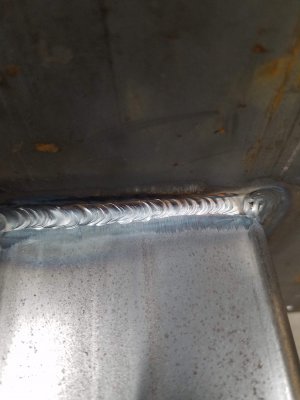- Joined
- Jan 7, 2016
- Messages
- 3,279
My instructor in the TIG class that got cancelled halfway through, described TIG welding as like patting your head and rubbing your tummy while trying to tap your toe to the beat.I found that a pretty accurate description, there is a lot going on. I need a lot more practice to get past barely marginal at it, I can't dance either.
Very true. I can't dance. Can't rub my head and pat my tummy, or is that the other way around. See, I am an uncoordinated mess. But, I actually can TIG weld. Not like the dudes that walk the cup and make us in awe of their skills, but mine isn't bad.
One of the little tidbits that I picked up watching a welding video somewhere was to move your TIG torch 1/3 of the puddle and then add your filler rod. Rinse. Repeat. I was trying to figure out how to "stack dimes" and it was a cursory comment in a video that had a nearly sea-change result in my welding.
Here are a couple of pics of my TIG welding. Not pro quality stuff but OK since my TIG instructor was crap and taught me nothing. You Tube has been more help over the last year or so. First is aluminum, second is steel.



